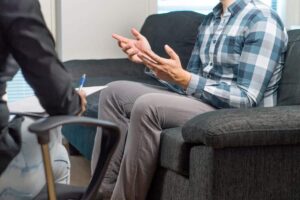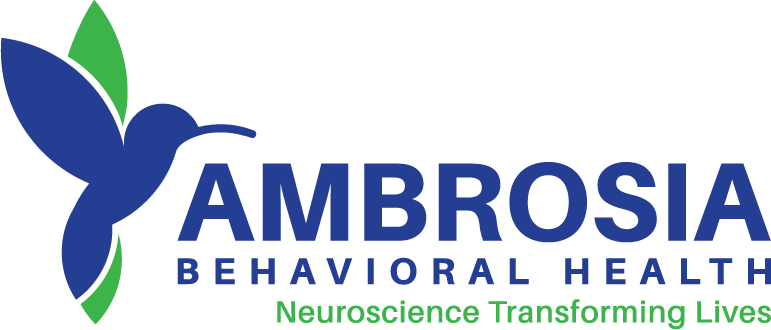Vicodin looks harmless. The pills are small, white, and smooth. Place them next to a vitamin, and it might be hard to tell the difference.
But there’s a lot of power packed into that tiny pill — and much of it is harmful.
Vicodin is partially responsible for a dangerous wave of addictions and overdoses sweeping across the country.
Every person with this issue has the power to get better. But they might need help from friends, family, and professionals to get there.

What is Vicodin?
Vicodin is an opiate and opioid medications are prescription painkillers. When we talk about the dangers of drugs handed out by doctors, we’re often talking about substances in this class. And Vicodin is definitely one of them.
The human body is studded with receptors that light up when supplied with opioids. It’s like plugging an appliance into a light socket. When the connection is firm, transformations happen.
A brain on Vicodin is flooded with pleasure chemicals, and for years, we’ve been told that this helps to ease pain. New research suggests that isn’t quite true.
Research from the Journal of the American Dental Association suggests that Vicodin is no better than NSAIDS (like ibuprofen or Meloxicam) in addressing pain. They alter chemistry, but they don’t ease discomfort. And it’s this shift in the brain that is responsible for compulsive use.
Side Effects of Vicodin
A brain triggered by Vicodin is awash in chemicals that should be tightly regulated. Ongoing exposure leads to lasting damage, and that can shift use from recreational to compulsive.
Think about how your eyes react to sitting in a dark room on a sunny day. After a few minutes, you can see everything clearly, even in low light. Step outside and you’re blinded because your eyes have changed.
Vicodin is like that. Take too much, and your brain becomes accustomed to it. Take it away, and you’ll feel out of place or even sick.
People with addictions to Vicodin experience tiny episodes of withdrawal between doses. They feel:
- Digestive upset. Nausea creeps in, or they develop diarrhea.
- Nervous. Fidgeting hands and tapping feet are common.
- Pain. Muscles lock, and the body sweats.
- Desperate. The brain begins to call out for drugs, and the person will do almost anything to heed that call.
People with Vicodin addictions can’t walk into a pharmacy to get more. Professionals know we’re in the midst of an opioid death crisis, and they’re under pressure to give out fewer and fewer Vicodin doses.
A person addicted to Vicodin probably has to buy it from a dealer, and the prices are extremely high. Experts say a Vicodin tablet can cost up to $25 on the street, which is a huge markup from the $1.50 a pill costs from a pharmacy.
In addition to losing financial security, someone addicted to Vicodin can lose their life. The drug can suppress the central nervous system and deliver a coma-like state in minutes. Some people don’t awaken from these episodes.

Medication for Opioid Withdrawal
You can’t will damaged brain cells to heal themselves. They feel they need Vicodin, and it’s hard to convince them otherwise. Doctors use medications to fool those damaged cells, so you can focus on therapy.
There are many different types of medications your doctor might try.
- Methadone: This is one of the oldest and strongest opioid recovery medications available. It convinces your brain that Vicodin is available, even when it’s not. If you’ve been taking a lot of Vicodin every day due to addiction, this could be a good choice.
- Buprenorphine: This is a newer replacement medication, and it works similarly to methadone. While you take this drug, your brain will feel Vicodin is still available. You can take this drug home and use it there.
- Antidepressants: Long-term use of Vicodin can lead to an inability to feel joy. Antidepressants, such as Mirtazapine, can correct the chemical imbalance and bring color to your life.
- Over-the-counter aids: You might need help with nausea, diarrhea, restlessness, and your appetite early in the healing process. A cocktail of over-the-counter solutions could help.
It might seem strange to use medications to recover from an addiction, but these solutions have a proven track record. According to the National Institute on Drug Abuse, people taking methadone are 4.44 times more likely to remain in treatment than those who don’t.
Addiction Counseling
Why does it matter how long you stay in treatment? Experts say you need time to create new habits that support your sobriety, and you can’t pick up those skills overnight. You’ll need to stay in your program long enough for the lessons to stick. And you’ll have many teachers to help along the way.
Counseling is a core part of any addiction treatment program. Your doctor might recommend:
- Individual counseling to help you set goals, discuss roadblocks, and celebrate successes.
- Group counseling to help you hear about how others deal with addiction. Together, you can come up with real-world strategies to help you all improve.
- Family counseling to help you repair the relationship damage an addiction can cause.
Your counselor might also connect you with outside resources that can help you deal with legal challenges, find a safe space to live, or improve your education.

Is It Time for Treatment?
It’s hard to recognize an addiction in yourself or someone you love. The problem tends to develop in small, unnoticeable steps. And denial can keep you from seeing the truth about what’s happening.
But it could be time for treatment if you’re noticing:
- An inability to quit. Few people with addictions want to keep using. But every time they make a step toward sobriety, they get pulled back into addiction.
- Physical distress. Has an overdose happened at least once? Do you see other signs, like vomiting and sedation?
- Shifting priorities. When drugs move to centerstage, concerns about family, education, and work aren’t compelling.
- Financial distress. Pills are expensive, and paying for them can mean losing everything.
If you see some or all of these signs, it’s time to get help. Treatment programs do work, but you have to enroll in them to see that for yourself. Do that, and you could open up a whole new world of health and healing.




